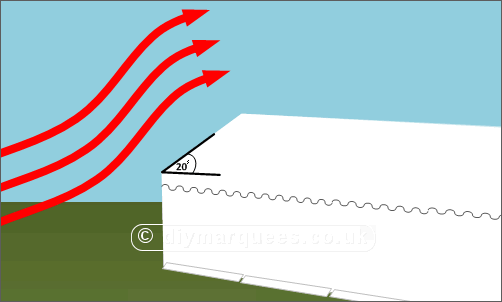
Optimizing Marquee Roof Angles for Durability
In the realm of large commercial marquees, the prevalence of a 20-degree angle for pitched roofs is notable. This translates to a 1m rise on 6m wide structures (2m leg = 3m apex height, 2.3m leg = 3.3m apex height) and a 1.5m rise on 9m wide structures (2.3m leg = 3.8m apex height).
While the manufacturing cost of a 20-degree angled roof may be slightly higher compared to a 30-degree roof, it is a deliberate choice for its enhanced wind resistance.
As the roof angle increases, the marquee’s ridge elevates, expanding the roof’s surface area. Simultaneously, the forces exerted on the roof increase exponentially. In essence, doubling the roof height quadruples the forces it must withstand.
The principle is clear: lower apex heights contribute to greater wind resistance in a structure.
In regions like Britain, where rain is a common challenge, the industry’s extensive experience has identified a 20-degree roof as the most durable solution against the prevalent wind and rain conditions.
It’s worth noting that smaller structures (3m or 4m wide) may fare better with 30-degree roofs, especially when supplemented with additional roof braces to fortify the framework.
For personalized event advice, feel free to reach out to us. Share event details such as the type, available space, number of guests, and site diagrams or photographs, and we’ll provide tailored guidance.
If you intend to use or quote any section of this article, please contact us for permission or licensing.

